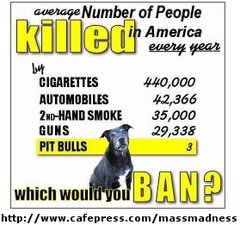Beware of raccoons -Trash-eating critters can infect dogs
I found this article in the Toronto Sun and wanted to share it with you to please protect your dogs and yourselves.
Beware of raccoons
Trash-eating critters can infect dogs
By MARILYN LINTON
Unlike many Torontonians, I have never minded sharing the city with our four-footed furry masked bandits. But recently I've learned that raccoons are not only bothersome trash-eaters but also disease carriers whose infections can be spread to other animals.
In talking to pet-owners and dog-walkers, I'd heard that dogs can get leptospirosis (a bacteria found in many raccoons.) Unfortunately, this disease can also be transmitted from infected dogs to owners via a friendly lick to the face.
Leptospirosis is one of those zoonotic infections that can be transmitted from animals to humans or from humans to animals. Rabies is one such infection, bird flu is another.
Unlike those scary diseases, however, leptospirosis can be cured by antiobiotics. The trouble is that the disease is rarely if ever on the radar screen of most family physicians, says John Prescott, chair of the department of pathobiology at Guelph University.
SERIOUS INFECTION
"Leptospirosis can cause a serious infection in people," he explains, confirming what I'd heard. "In the last few years we have recognized several cases in humans that have been acquired from dogs. Mostly it's people working in vet practices but it also includes owners of dogs."
According to the Centers for Disease Control and Prevention, leptospirosis is a bacteria disease that causes high fever, severe headache, chills, muscle aches and vomiting. Because it attacks organs such as kidneys and the liver, the damage is potentially serious, even fatal, if left untreated. It can be confirmed through a laboratory blood or urine test.
Prescott says that veterinarians have noted an increase in the number of cases seen in dogs. One report says that in Canada in 2005 there were more than 1,000 cases compared to only 50 ten years ago.
"Every vet in most parts of Ontario has seen one case if not several more," Prescott says. "We relate it to the existence of large numbers of raccoons. If we look at the kidneys of raccoons dead on the roadside, they all have inflammation of the kidneys so we think the disease has been spreading in the raccoon population."
The organism resides in the kidneys, Prescott explains, so the disease is spread from the urine. Dogs may be exposed to the bacteria through urine-contaminated water: Think city raccoons peeing everywhere, warm rainy weather, and plenty of puddles for dogs to stick their snouts in. Skunks can also be lepto carriers. Cats, by the way, are immune to the disease.
BLAMES CLIMATE CHANGE
Prescott believes that climate change is also to blame for the increase in cases: "The leptospira bacteria thrive in wet, moderate temperatures and do not like dryness or cold. For example, during an especially warm and wet fall in 2000 we saw a huge surge."
The recent cold snap killed the bacteria, but come spring there will be another round of infections as the weather warms up and dampness returns.
The Centers for Disease Control and Prevention warns that leptospirosis occurs worldwide and is most common in temperate or tropical climates, making it a recreational hazard for campers or those who swim, wade or whitewater raft in contaminated lakes and rivers.
In the past, lepto was well-controlled through vaccinations but today's lepto cases are a result of a couple of new strains of the bacteria.
"There's now a new vaccine that contains two of the strains that are present in raccoons," Prescott says. But because the vaccine is not yet recommended as a "core' vaccine (like rabies and distemper are), not all veterinarians recommend it. Some believe only the outdoorsy, water dogs in their practice are at risk while ordinary city dogs are not.
"But anywhere there are raccoons, you and your pet can be exposed," warns Prescott, who says that the disease is a public health issue and one that family physicians should learn more about.
"If someone came to their doctor with liver disease, the last thing the doctor would probably ask them is if they have a dog. It's important to increase the awareness of it in that leptospirosis is something that's been pretty dramatic in the animal world in the last year. Ten years ago, nobody would have heard of it."






























